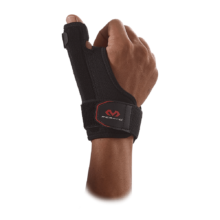Thumb Spica
Login For Dealer Pricing
The Bio Skin Thumb Spica controls motion in the CMC and MP joints by protecting the thumb against painful movements, while allowing full use of the fingers. Constructed with Bio Skin`s patented Ultima 2s material, the Thumb Spica features a thin layer of ultra-soft micro-fleece against the skin, which wicks moisture away from the body, keeping you cool and dry. The brace can easily be applied with one hand.
Relief from overuse or injury. This ultra low-profile brace protects the thumb from unwanted motion while allowing a full range of motion in the other digits. It is comfortable to wear and easy to apply with one hand. No laces!




